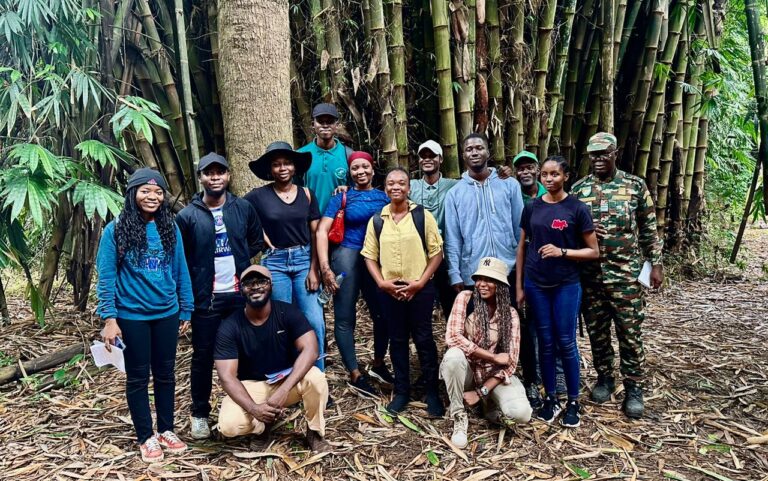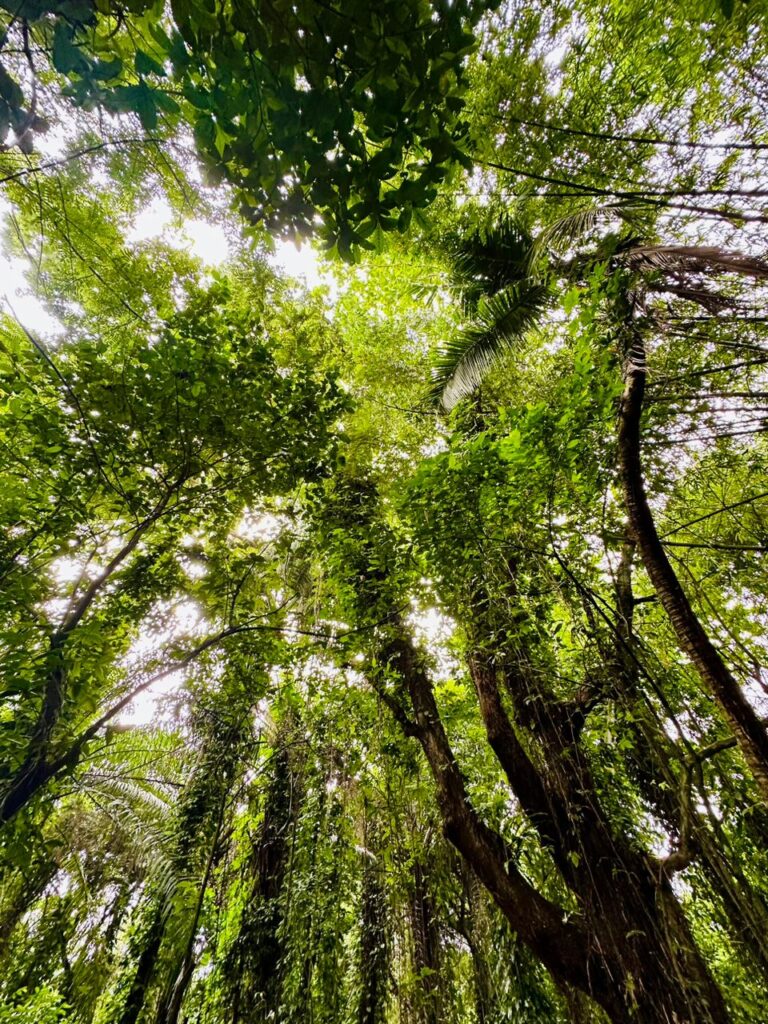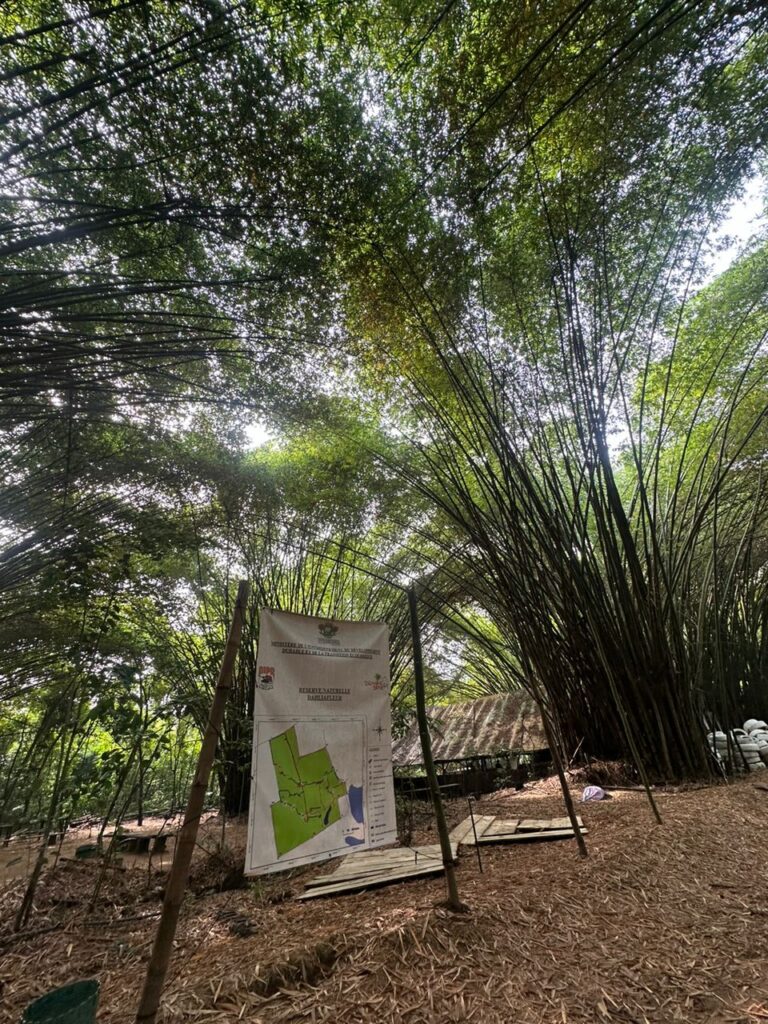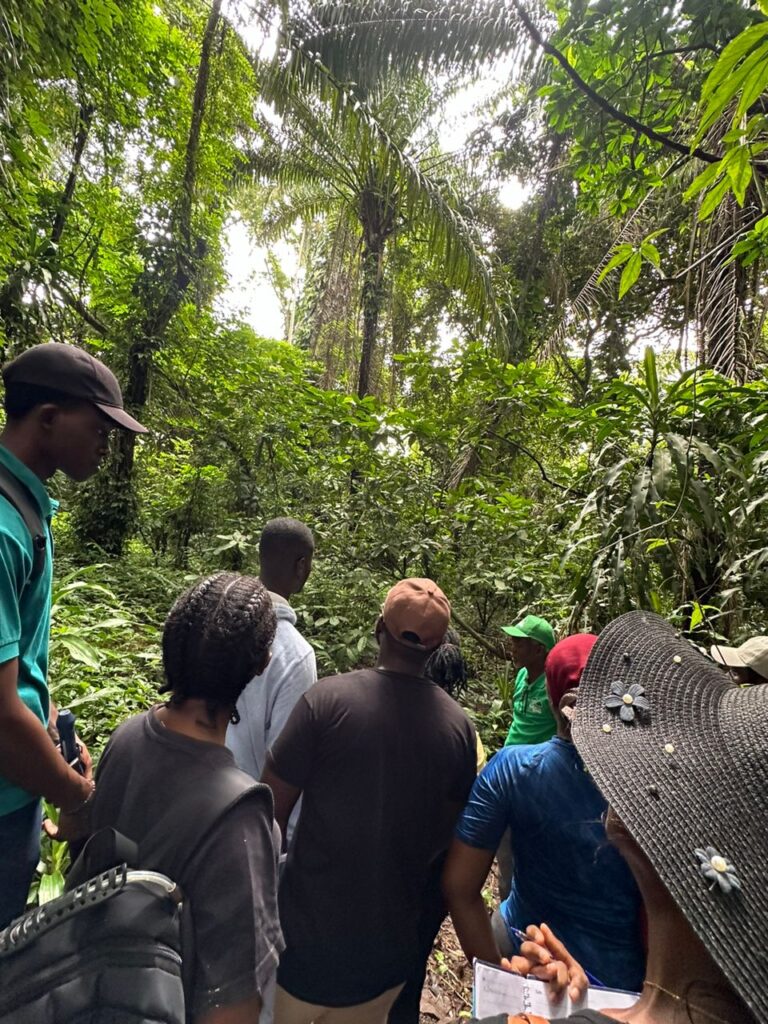On June 27, 2024, AFAS Côte d’Ivoire had the pleasure of attending a fieldwork session at the Dahlia Fleur Reserve in Abidjan, as part of our course on Indigenous and Local Knowledge Systems. This excursion aligns with AFAS’s mission to explore how Nature-Based Solutions (NBS) are implemented in the co-management of the park.
The Dahlia Fleur Reserve serves as a model for how nature-based strategies can improve urban biodiversity and resilience by integrating science, policy, and practice. This reserve uniquely blends the global history of the dahlia flower with the local horticultural practices of Abidjan. Originally native to Mexico and Central America, the dahlia was introduced to Abidjan by Italo Barbeta in 2000. The flower first arrived in Europe in the late 18th century, where it quickly gained popularity due to its diverse and vibrant varieties, including species such as Dahlia pinnata, Dahlia rosea, and Dahlia coccinea.

The reserve, situated in Bingerville, east of Abidjan was initially established around 1960 by Barbeta, who chose this site for his botanical studies. In 1994, President Félix Houphouët-Boigny allocated 200 hectares of land to Barbeta, who then constructed a residence and laboratory, and commenced flower grafting experiments, particularly focusing on his preferred species, the dahlia. Upon Barbeta’s death in 2001, he was buried within the reserve (Rosine et al., 2024). As urbanisation pressures mounted, 176 hectares of the land were returned to state ownership in 2004 by decree (No. 2004-566 of October 14, 2004), designating it as a public utility. To further integrate it into the network of protected areas, the Dahlia Fleur Reserve was declared a public utility domain in 2007 by the Ministry of Environment and Water and Forests (Decree No. 00895/MINEEF/ of October 17, 2007), under the designation “Partial Nature Reserve of Dahlia Fleur.” Subsequently, in 2013, Decree No. 2013-127 of February 20, 2013, granted the reserve the official status of a partial nature reserve of flora, with a final area of 148 hectares. The reserve is currently managed by the Ivorian Office of Parks and Reserves.
Bordered by the Ebrié lagoon, the Dahlia Fleur Reserve boasts a variety of species, including 15 species of mammals, 69 species of birds, and numerous insects, all thriving in a man-made ecosystem featuring dense forest, tree species, mangroves, and other horticultural elements (Kouassi et al., 2023). However, Koffi et al., (2022) reported that since the reserve’s founding in 2001, few comprehensive studies have focused on its biological richness and less is known about its biodiversity. To fill this gap, they conducted a study to determine the biodiversity of plants in the Dahlia Fleur Partial Nature Reserve. This study revealed the presence of 135 species, organised into 110 genera and 53 families. For instance, some of the trees in the photos belong to the Bambusa family, known for their fast-growing, woody stems, which are commonly referred to as bamboo.Université Félix Houphouët-Boigny

Although the Dahlia Fleur Nature Reserve is a vital component of the Ivorian protected areas network, it faces significant human pressure (Elise et al., 2021). A first problem is habitat loss due to agriculture and construction. The reserve is caught between two rapidly urbanising areas: Cocody to the west and Bingerville to the east. Over the past 30 years, these communes have respectively lost 36% and 58% of their natural spaces, with human population growth rates of 4.5% (Kouadio et al., 2021; INS, 2014). To illustrate this challenge, in April 2022, the General Director of the Tourism and Hospitality Industry of Ivory Coast mentioned a development project for a smart city with a 1,000 rooms hotel, along with a shopping gallery and a wildlife park on the Dahlia fleur site, which should be implemented by the Accor group. Promptly, members of parliament and various civil society organisations initiated a petition, which garnered around 25,000 signatures leading to the abandonment of the project (Mongabay, 2022). Second, there is the risk of environmental degradation. Surveys conducted by Kouadio et al., (2021) revealed that 57% of households around the reserve dump their waste nearby. This waste ends up in the lagoon that sustains the reserve, posing pollution risks to the water sources that the animals rely on.
Facing numerous challenges, the authorities of the Dahlia Fleur Reserve (DFR) have adopted an integrated management approach that synergizes scientific knowledge with Indigenous and Local Knowledge (ILK). The Office Ivoirien des Parcs et Réserves (OIPR), responsible for the reserve’s management, has fixed a maximum limit of 200 visitors per day to mitigate environmental impact and maintain the park’s ecological balance. Also, a local management committee has been established to serve as a platform for consultation between park managers and stakeholders, including traditional authorities and local communities. These consultations enable Indigenous and local people to share their knowledge, thereby assisting managers in formulating well-informed management strategies.
Lieutenant-Colonel Zrehon Michel, head of the reserve sector, underscored the significance of these consultations, which was supported by the literature (Kouadio et al., 2021);
The integration of ILK in conservation has yielded significant results. According to Konan et al. (2021), despite the challenges, the conservation of the Dahlia Fleur Reserve is advancing well and moving towards its original ecological status.
Additionally, sustainable management of the reserve requires an understanding of its various land uses by the local community. Further research is needed to understand the reserve’s ecosystems for its biodiversity conservation and sustainable management by all parties involved.
Beyond the importance of ILK)in solving various challenges within Dahlia Fleur, the lessons learned during the field trip emphasise the significance of collaborative management for sustainability. The partnership between the National Parks and Reserves office and local communities around the reserve highlights a successful model where scientific knowledge and traditional practices combine to yield more effective and sustainable conservation results (Moller et al., 2004). This collaborative approach is particularly critical in urban climate regulation. The reserve’s varied ecosystems (artificial forest, dense forest, mangrove, and horticultural areas) help reduce urban heat and improve air quality, showcasing the importance of protected areas in mitigating the effects of urbanisation (Bond & Parr, 2010).
Moreover, community engagement is central to the reserve’s success. Local populations benefit from employment opportunities and participate in park monitoring, fostering a sense of ownership and responsibility. This experience bridges the gap between theoretical learning and practical application, enriching our understanding of environmental management and cultural importance (Agrawal & Gibson, 1999).
In conclusion, the lessons from Dahlia Fleur Reserve emphasise the need for collaborative, community-centred approaches to biodiversity conservation.


References
Information about the authors:
All authors from this blog are students from the 2nd and current master cohort based at the Université Félix Houphouët-Boigny in Côte d’Ivoire.
Contact email: delatheophilus[at]gmail.com